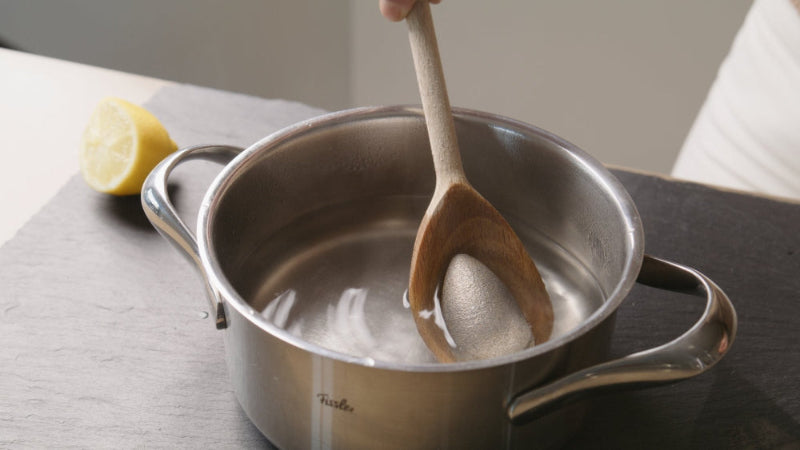
Low Iron: Symptoms, Causes, and Natural Solutions
Share
That constant fatigue that follows you around like a shadow? The way your heart races after climbing just one flight of stairs? Those perpetually cold hands and feet, even in summer? I spent years brushing these signs aside, attributing them to "just being busy" or "not getting enough sleep."
It wasn't until my doctor looked at my blood test results and said, "Your iron levels are seriously low," that everything clicked. If you're nodding along right now, recognizing these symptoms in your own life, you're not alone – and more importantly, there are solutions that actually work.
What Does Low Iron Feel Like?
Low iron doesn't announce itself dramatically. Instead, it sneaks into your life, gradually stealing your energy and vitality until what once felt normal now seems like a distant memory.
The most common symptoms include:
- Persistent fatigue and weakness that doesn't improve with rest
- Shortness of breath with minimal exertion
- Heart palpitations or a racing heartbeat
- Cold hands and feet, regardless of the temperature
- Pale skin, especially around the gums, inside of lips, and lower eyelids
- Brittle nails or spoon-shaped nails (koilonychia)
- Headaches and dizziness
- Restless leg syndrome or an uncontrollable urge to move your legs
- Strange cravings for non-food items like ice or dirt (a condition called pica)
- Increased susceptibility to infections
For me, the cold hands and unexplainable afternoon energy crashes were the most frustrating. I'd wrap myself in layers while colleagues worked comfortably in t-shirts, and by 3 PM, I could barely keep my eyes open – regardless of how much sleep I'd gotten.
Why Your Iron Levels Matter
Iron isn't just another nutrient – it's absolutely essential for your body to function properly. It serves as a critical component of hemoglobin, the protein in red blood cells responsible for transporting oxygen throughout your body.
When iron levels drop, oxygen delivery becomes compromised. Your heart works harder to compensate, your brain receives less oxygen, and every system in your body feels the impact.
Low iron affects an estimated 25% of the global population, with women of reproductive age, pregnant women, and young children at highest risk. It's not just a minor inconvenience – it can significantly impact your quality of life and long-term health.
Common Causes of Low Iron Levels
Understanding why your iron is low is key to addressing the root cause. The most common reasons include:
1. Blood Loss
Any condition that causes blood loss can lead to iron deficiency:
- Heavy menstrual periods (the leading cause in women of reproductive age)
- Gastrointestinal bleeding from ulcers, polyps, or inflammatory bowel diseases
- Regular use of NSAIDs like aspirin and ibuprofen, which can cause stomach bleeding
- Surgery or trauma
2. Dietary Factors
Not consuming enough iron or having issues with absorption:
- Vegetarian or vegan diets (plant-based iron is less easily absorbed)
- Poor overall nutrition
- Certain food combinations that inhibit iron absorption
- Limited access to iron-rich foods
3. Increased Iron Requirements
Some life stages demand more iron:
- Pregnancy (blood volume increases by about 50%)
- Breastfeeding
- Growth spurts in children and adolescents
- Intense athletic training
4. Absorption Issues
Sometimes the problem isn't intake but absorption:
- Celiac disease
- Crohn's disease
- Gastric bypass surgery
- H. pylori infection
- Certain medications that reduce stomach acid
Testing for Low Iron: What to Ask Your Doctor
If you suspect you have low iron, proper testing is essential. Simply asking for your "iron levels" isn't enough, as comprehensive testing includes several markers:
- Hemoglobin and hematocrit: Measures the amount and percentage of red blood cells
- Serum ferritin: The most sensitive test for iron stores
- Serum iron: Measures iron currently in your bloodstream
- Total iron-binding capacity (TIBC): Shows how well your blood can transport iron
- Transferrin saturation: Indicates how much transferrin (an iron-carrying protein) is carrying iron
When I finally got tested, my ferritin levels were in the single digits (normal is 20-200 ng/mL for women). No wonder I was exhausted!
Traditional Approaches to Iron Deficiency (And Their Drawbacks)
The most common treatment for iron deficiency is oral iron supplements. While effective for many, they come with significant drawbacks:
- Gastrointestinal side effects: Constipation, nausea, vomiting, and stomach pain
- Poor absorption: Only about 2-10% of the iron in supplements is actually absorbed
- Medication interactions: Iron supplements can reduce the effectiveness of certain medications
- Compliance issues: Side effects often lead to people stopping supplementation
When my doctor first prescribed ferrous sulfate tablets, I experienced such severe stomach cramps and constipation that I couldn't continue taking them. This is an incredibly common experience – studies show up to 70% of people report side effects, and about 30% stop taking their supplements because of them.
Natural Solutions for Low Iron
Fortunately, there are gentler, more effective approaches to boosting your iron levels:
1. Dietary Modifications
Incorporating iron-rich foods into your diet is fundamental:
Heme Iron Sources (more easily absorbed):
- Lean red meat
- Liver and organ meats
- Shellfish (especially clams, oysters, and mussels)
- Sardines
Non-Heme Iron Sources:
- Legumes (lentils, chickpeas, beans)
- Tofu and tempeh
- Dark leafy greens (spinach, kale)
- Dried fruits (apricots, prunes)
- Pumpkin seeds
- Fortified cereals and breads
Iron Absorption Enhancers:
- Vitamin C-rich foods (citrus fruits, bell peppers, strawberries)
- Fermented foods
- Avoiding tea and coffee with meals
2. Cooking in Iron Cookware
One of the most effective yet underutilized approaches is cooking with iron. When you cook acidic foods (like tomato sauce) in cast iron cookware, some of the iron leaches into the food – a natural and gentle way to increase your intake.
Traditional cast iron pans can be heavy and require special care, but modern solutions like The Iron Egg make this approach accessible to everyone.
3. The Iron Egg: A Revolutionary Approach
The Iron Egg takes the principle of cooking with iron and simplifies it. This small, egg-shaped tool is made from pure cast iron and designed to release bioavailable iron when boiled in water with a few drops of lemon juice.
Laboratory testing shows it releases up to 6.23mg of iron in just 10 minutes – a significant amount that can be added to soups, stews, teas, or any recipe using water.
What makes the Iron Egg different from supplements:
- No digestive side effects: The iron is released in a form that's gentle on your system
- Customizable dosage: Use more or less of the water based on your needs
- Cost-effective: A one-time purchase rather than ongoing supplement costs
- Integrated with cooking: No pills to remember
- Sustainable: Both environmentally and physiologically sustainable approach
After struggling with traditional supplements, I found the Iron Egg provided a gentler way to consistently boost my iron levels without the digestive distress. Within a few weeks of daily use, I noticed my energy improving and those afternoon crashes becoming less severe.
4. Lifestyle Modifications
Beyond dietary changes, certain lifestyle adjustments can help maximize your iron levels:
- Spacing out calcium and iron: Avoid calcium-rich foods or supplements within 2 hours of iron-rich meals
- Managing heavy periods: Talk to your doctor about options if menstrual blood loss is excessive
- Regular monitoring: Keep track of your iron levels with periodic testing
- Stress management: Chronic stress can impact nutrient absorption
Creating Your Low Iron Action Plan
If you suspect you have low iron, here's a step-by-step approach:
- Get proper testing: Schedule an appointment with your healthcare provider for comprehensive iron testing
- Identify the root cause: Work with your doctor to determine why your iron is low
- Address any underlying conditions: Treat contributing factors like heavy periods or digestive issues
- Implement dietary changes: Increase iron-rich foods and absorption enhancers
- Consider gentle iron solutions: Try approaches like The Iron Egg before resorting to supplements
- Monitor and adjust: Track your symptoms and get retested after 2-3 months
When to Seek Medical Attention
While natural approaches can be very effective, severe iron deficiency requires medical attention. Consult your doctor if you experience:
- Extreme fatigue that interferes with daily activities
- Shortness of breath or chest pain
- Rapid or irregular heartbeat
- Severe headaches or dizziness
- No improvement after 2-3 months of natural interventions
The Bottom Line
Living with low iron isn't just about dealing with fatigue – it impacts every aspect of your life, from your mood and concentration to your immune function and temperature regulation.
The good news is that with the right approach, most people can restore their iron levels effectively and gently. By combining dietary changes, cooking techniques like using The Iron Egg, and lifestyle modifications, you can reclaim your energy and vitality without suffering through the side effects of traditional supplements.
Remember, addressing iron deficiency is a marathon, not a sprint. Be patient with your body, celebrate small improvements, and know that with consistent effort, those cold hands, racing heart, and afternoon energy crashes can become a thing of the past.
Have you struggled with low iron or found a solution that works for you? Explore how The Iron Egg might fit into your iron-boosting strategy.

